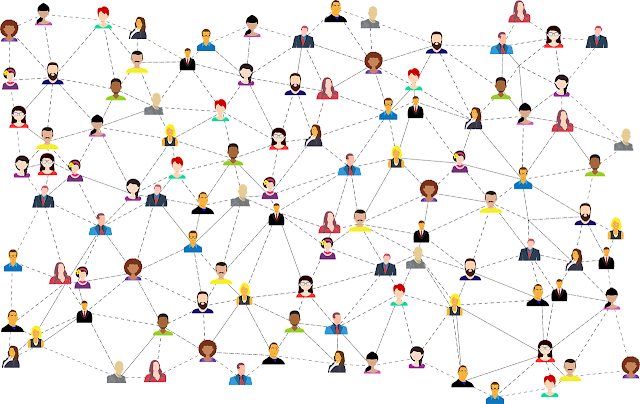Note: This blog is the second in a series that looks at social capital, social media and college student success. The first blog provided a background on social capital, and a glimpse at how it is impacted by social media. This post looks specifically at Facebook as a supplier of social capital. The third and last post of the series will look at social capital and socail media in the experiences of a specific population, "first generation" college students.
Facebook is a quintessential social media site. Originally developed in 2004 as a site for Harvard students only, the site became open to anyone at 13 years old, with a valid email address. As of the 3rd quarter of 2018, there were 2.37 billion monthly active users, with 1.49 daily active users. Of the world-wide population, 26.3% use Facebook.
It is well-known in social sciences that humans do well when they are connected with other humans, and one way in which this connection is described is by the idea of "social capital." I recently blogged about this (see Social Capital/Social Media) but it bears repeating.
Social capital is a nebulous term that can most easily be defined by its effects. An individual with a goodly amount of social capital fits into his or her environment - knows the norms, values and the unspoken knowledge that marks a native.
He or she has some personal bonds with some that are very close and/or have existed for long amounts of time, and these bonds provide strong emotional support. He or she has other social bonds that are not so close, but provide support as well. The support these bonds provide is both informational and supportive in an "atta girl" sort of way. Motivating, but not necessarily comforting. Moving one forward instead of making one comfortable where one is.
Health and wellness information is one popular field of information, but another very important source of information from these more tenuous bonds is information about how others react, respond, and appear to think and feel.
This information, gleaned from many weak social bonds, means that he or she is able to function within other social environments. If this individual has questions about how to fit in, there is a wealth of individuals who can provide examples, if not direct information.
Mark Zuckerberg may have had social capital in mind as he and his roommates developed and launched Facebook - being a student at Harvard could imaginably have some stressors that social capital could soothe. If not, then Facebook was serendipitous. It greatly facilitates the collection of social capital.
Generational ties within families and close social circles (such as high school friends) are stretched, as members move for work or to adapt to other social needs. Facebook provides a quick and easy way to keep in touch with, or at least an eye on, people who are strongly bonded together. 83% of parents are Facebook friends of their children. Many older adults use Facebook primarily to keep social contacts that cannot easily be maintained by face-to-face contact. These are instances of Facebook being a mechanism for maintaining "bonding" social capital.
The weaker bonds described above are called "bridging" social capital, and it is here that Facebook is a social capital bonanza. Think of the benefits of bridging social capital as being touched with a dot of "social well-being" when one is in contact with a "friend." While such dots might be hard to come by in the work-a-day world, sitting down to 20 minutes of Facebook (the time the average user spends on the site per day) opens up the potential for hundreds of "well-being dots." The average individual has 338 Facebook friends. It is likely that these friends are distributed among formal or informal groups, and so contact with any one friend may be sporadic.
The magic of bridging social capital, however, is in its bulk. Ask a question on a health site. Hundreds of individuals may see that question. It is possible that many will respond. It is probable that other Facebook friends are reading these responses and supporting them, and so the question poser, with likes or their own responses. Send out a meme, and the person is likely to get feedback that they are "liked" or somehow commiserated with. Sharing a post provides the opportunity to assert one's position within a network, with the expectation that the network will appreciate and respond back to what has been shared.
Going back to the bridging social capital dots of well-being, it is easy to see how time spent with Facebook can contribute to an individual's wealth of social capital.
In my last post of this series, I will take this idea of bridging social capital dots to a specific population, "first generation" college students, those who have no parent that attended college. This population has some interesting tales to tell about the use of Facebook and other social media.
Credits:
53 Incredible Facebook Statistics and Facts , Kit Smith, June 1, 2019, Brandwatch
Image by Gordon Johnson from Pixabay
